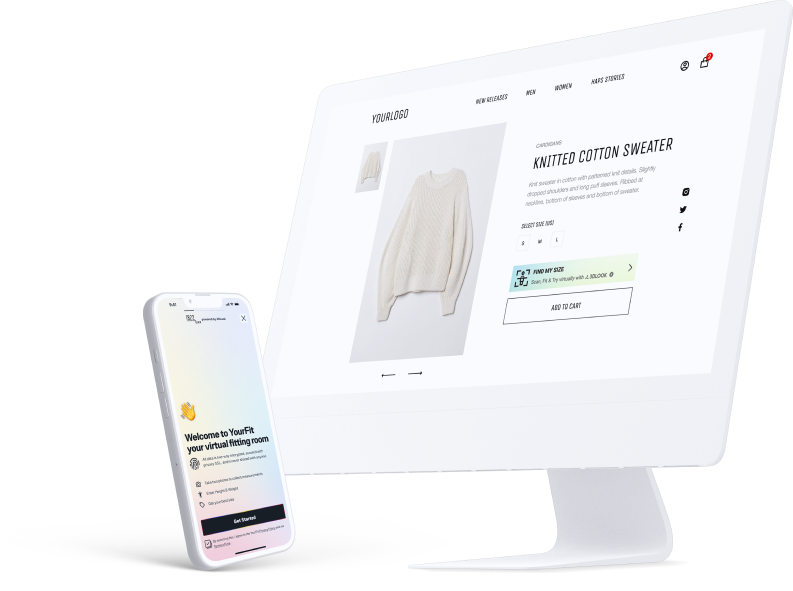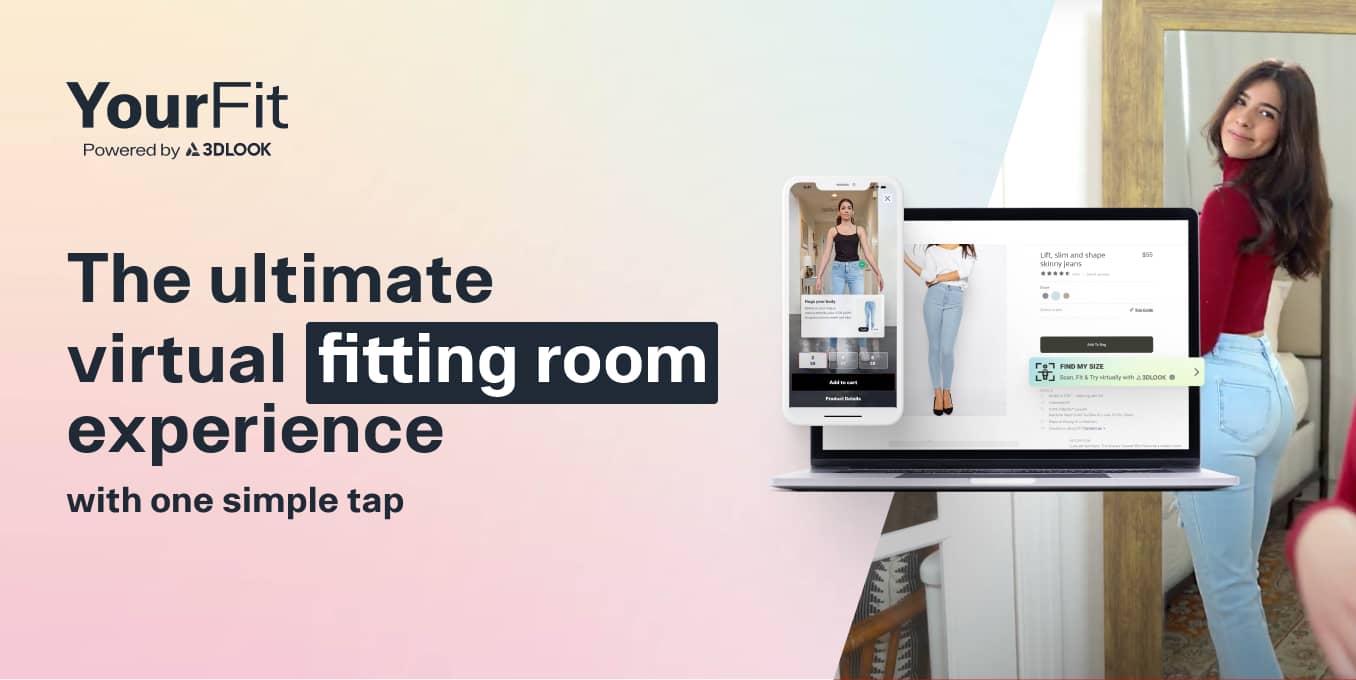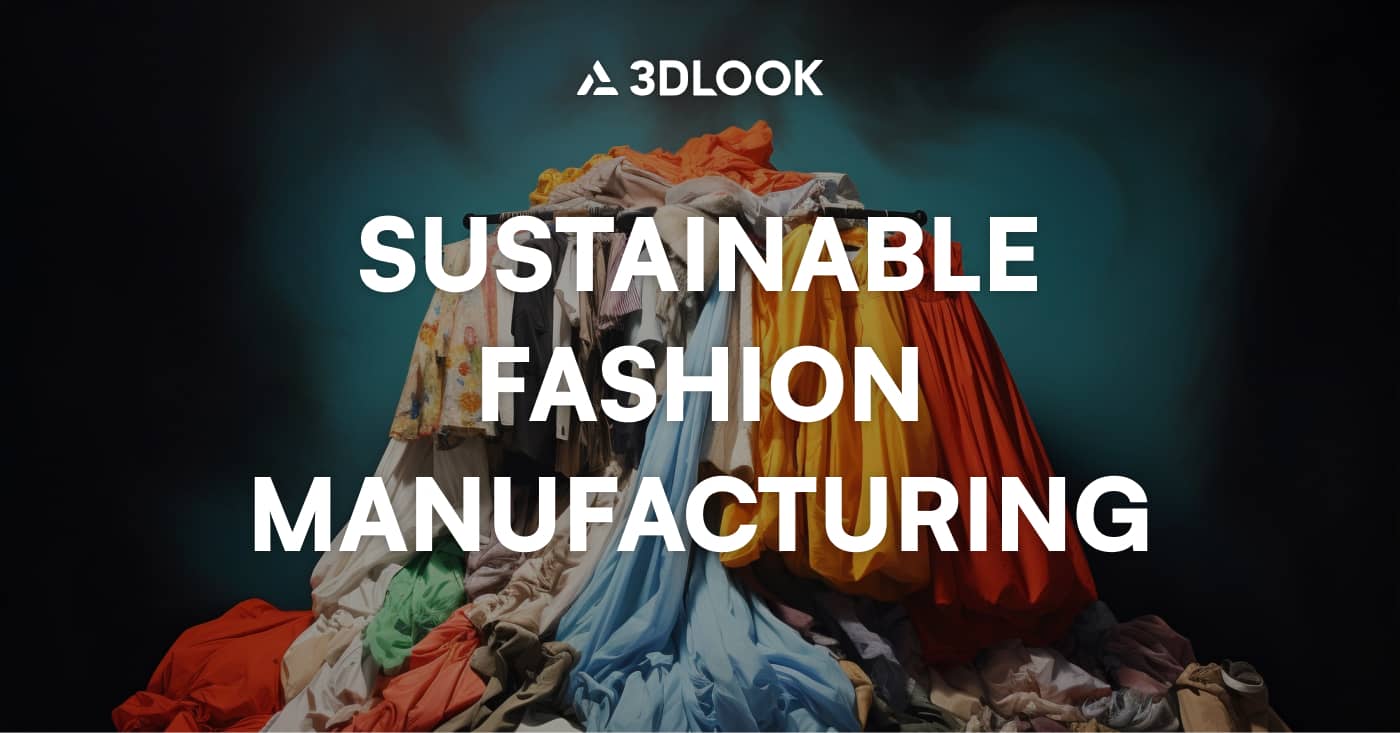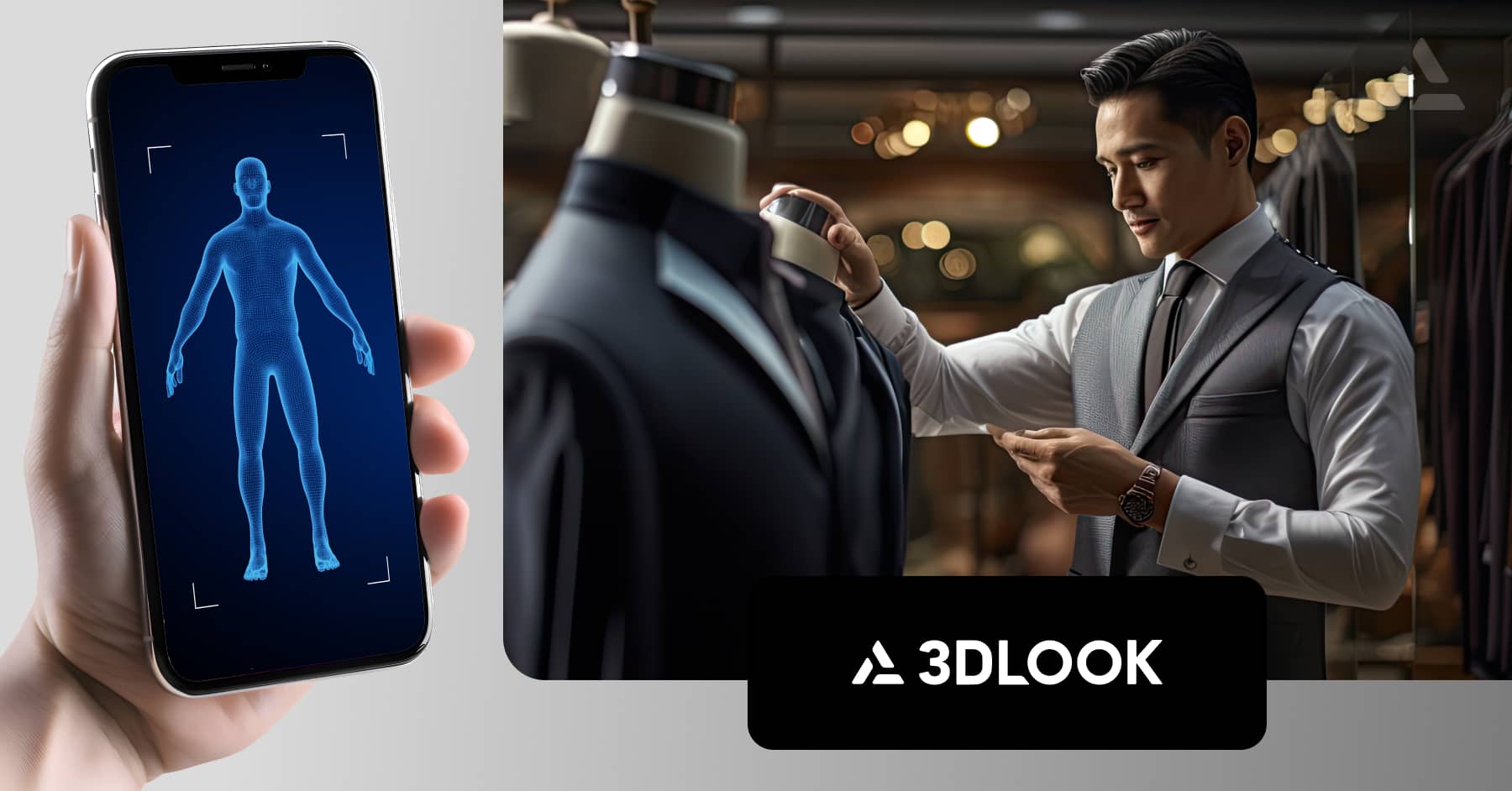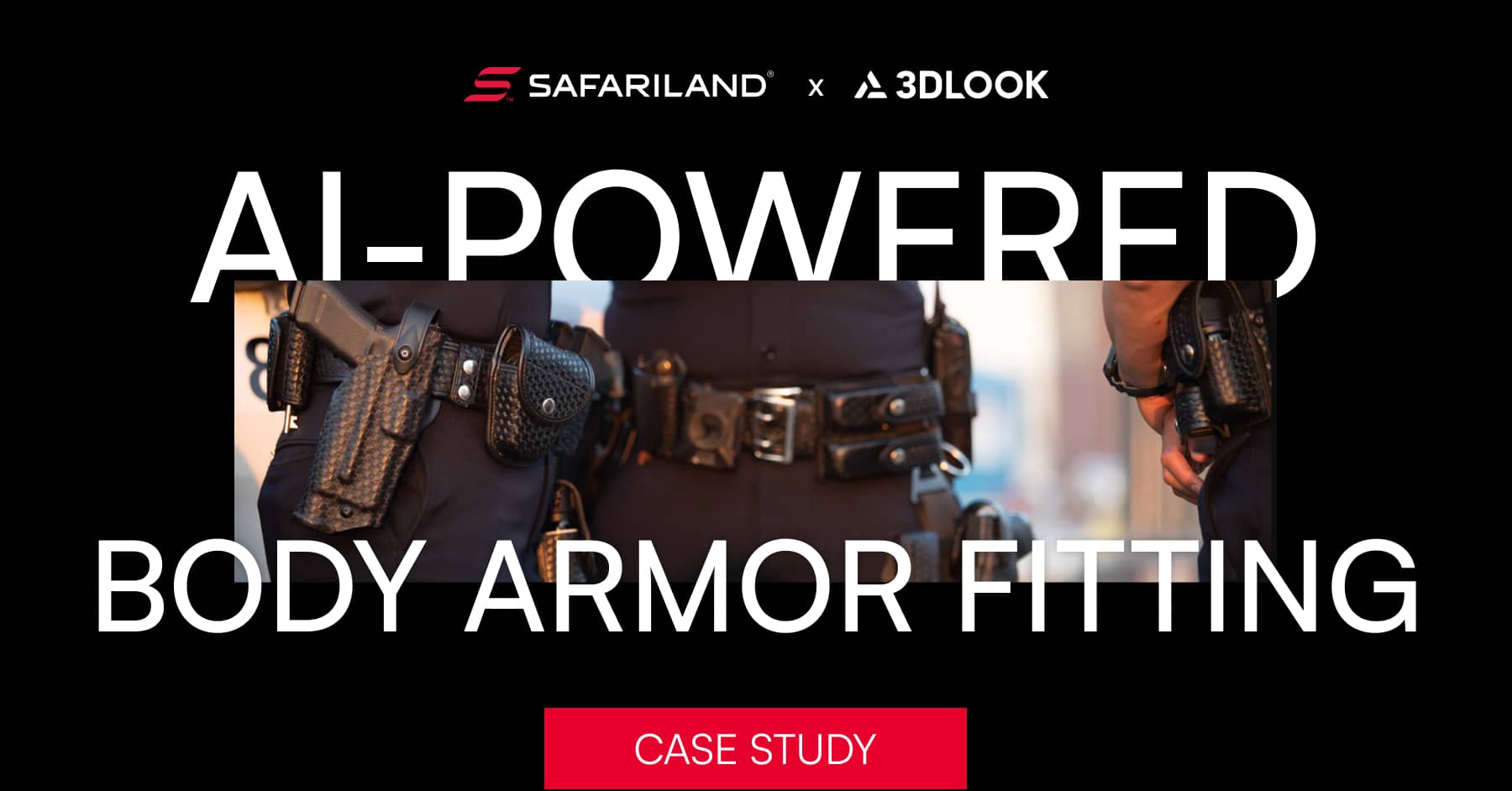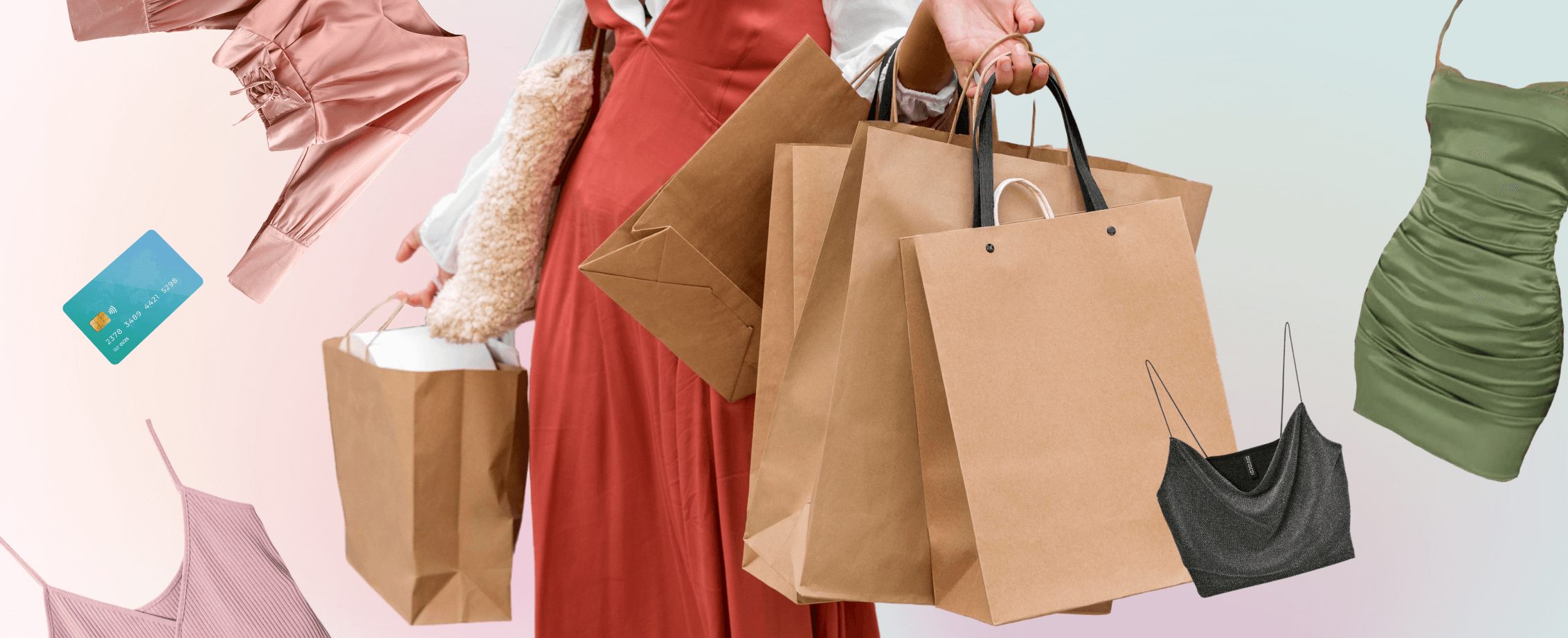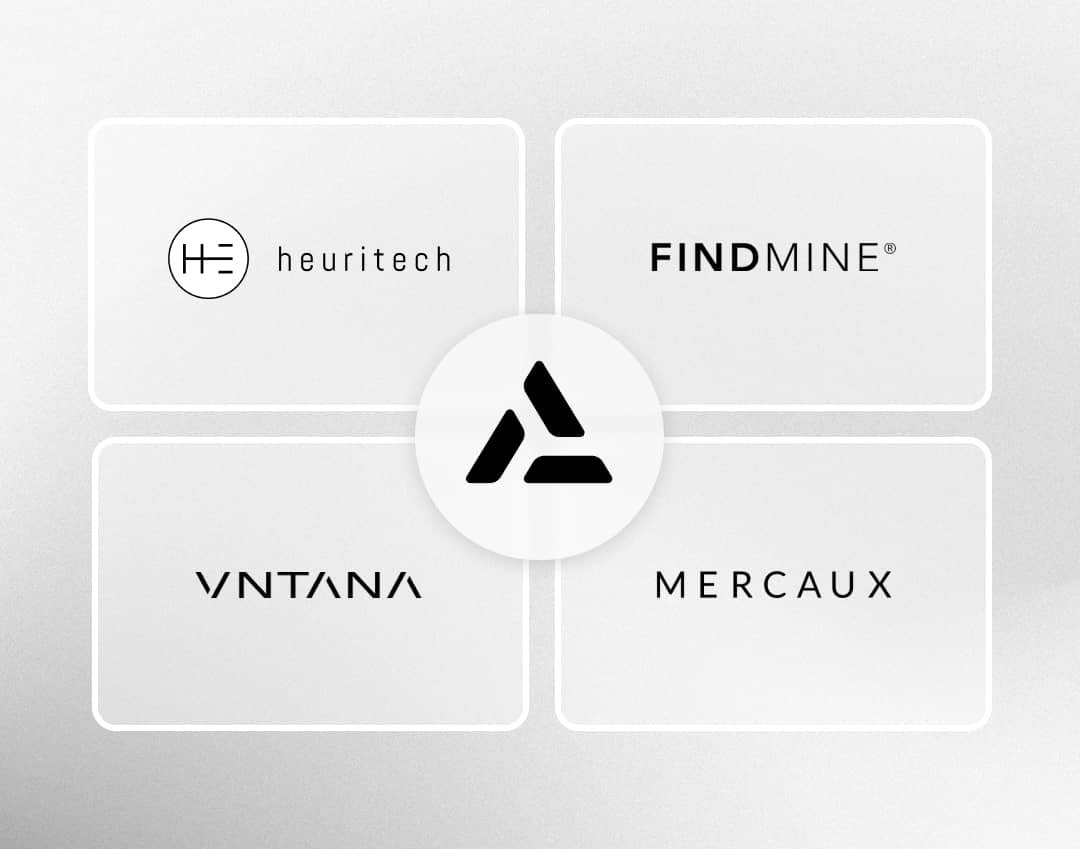Sizing solutions are a hit among shoppers, but which tool is best for your business?


Share on

XS, S, M, L or XL? Sizing tools can help solve one of the biggest pain points consumer’s face when shopping online: deciding which size will fit best. Discover the various sizing solutions available to fashion retailers and the benefits they deliver for businesses, customers and our planet.

XS, S, M, L or XL? Sizing tools can help solve one of the biggest pain points consumer’s face when shopping online: deciding which size will fit best. Discover the various sizing solutions available to fashion retailers and the benefits they deliver for businesses, customers and our planet.
Offering shoppers the ultimate convenience, the $5.7 trillion global eCommerce market continues to grow at an astounding annual rate of 19.4% according to Statista. However, for fashion consumers, the ease of online shopping is drastically reduced. They spend hours browsing row after row of product images featuring models that look nothing like them and scouring confusing charts to determine their right size, only to discover that their purchase doesn’t fit quite right anyway. To create an ecommerce experience truly fit for online fashion shoppers, retailers require alternative, innovative sizing solutions.
What is a fashion retail sizing solution?
Recent advancements in the fashion technology space have produced several effective ways for retailers to guide customers on which product variants are most likely to suit their body shape and fit preferences.
These solutions typically utilize artificial intelligence algorithms that analyze customer data and compare it against product data to produce a size recommendation. The difference between solutions is the type of information these algorithms are fed.
Some sizing solutions analyze a customer’s past purchases. Some rely on estimates inputted by the customer, such as their body shape and fit preferences, while others scan the shopper’s body to produce results with greater accuracy. These tools come in a variety of shapes and sizes, but all serve to remove the complexity around sizing.
Solving fashion retail’s biggest challenges: The benefits of eCommerce apparel fashion sizing tools
According to McKinsey, ‘digital’, ‘sustainability’ and ‘consumer engagement’ are viewed as the biggest opportunities for fashion brands moving forward. Combining a wealth of benefits, clothing size apps can help retailers to meet these modern demands.
1. Remove customer uncertainty
For the 83% of online apparel stores that fail to provide sufficient sizing information, according to Baymard, the uncertainty caused likely comes at a huge financial and resource cost. Sizing doubts leads customers to do one of three things: abandon their purchase, seek help from customer service reps or order in multiple sizes and return those that don’t fit.
Sizing tools instill confidence in customers, encouraging them to checkout without bracketing their purchase or seeking help. By doing so, businesses can dramatically improve key metrics, such as conversion rates and average order values.
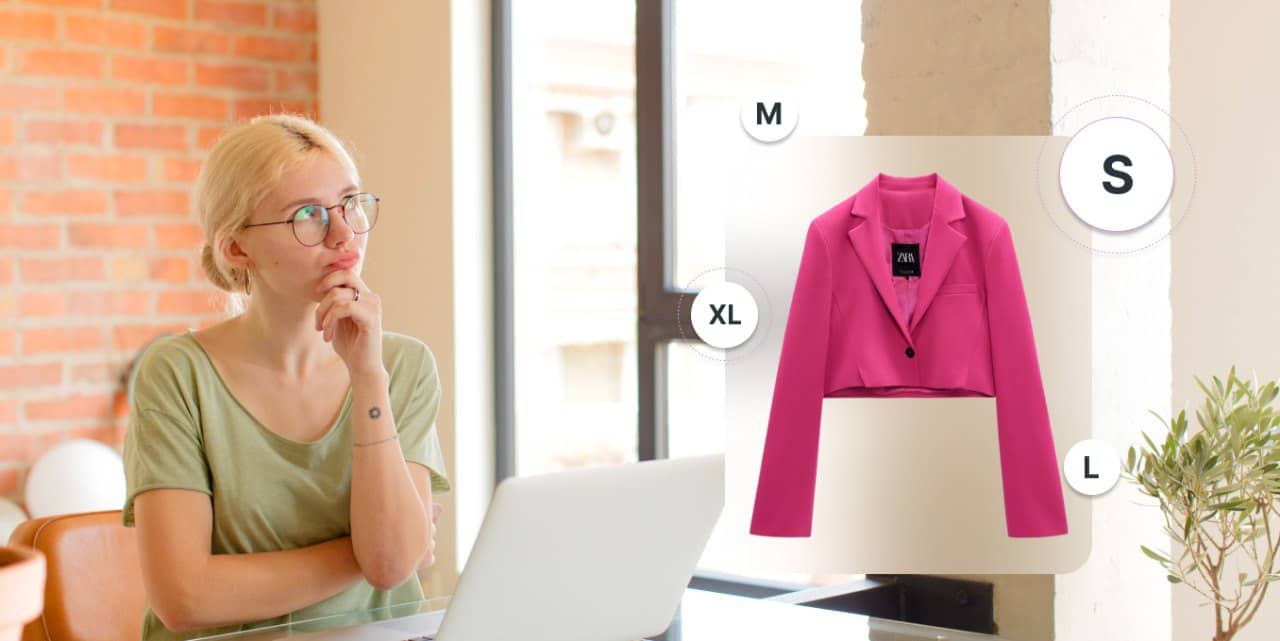
Sizing doubts leads customers to do one of three things: abandon their purchase, seek help from customer service reps or order in multiple sizes and return those that don’t fit.
Image Source: 3DLOOK
2. Reduce fashion’s environmental impact
According to Optoro, hauling returned goods between sorting facilities creates over 15m metric tons of carbon dioxide emissions annually in the US alone, only for five million pounds of returned goods to end up in landfill anyway. In the fashion sector, return rates can reach as high as 50%, with poor fit among the primary causes.
With close to half of all shoppers admitting to bracketing their purchases, according to Narvar, much of the resulting waste could be avoided by providing an effective sizing process – that doesn’t require resorting to harmful practices that cost businesses and our planet dearly.
3. Minimize customer churn rates
High return rates aren’t just terrible for the environment… they’re also terrible for business.
According to PwC, one bad experience is enough to turn 32% of all consumers off of a brand, and a past study by GlobalData similarly found that sizing issues would put three quarters of shoppers off purchasing from a particular retailer. One of the biggest pain points in the fashion customer journey, poor sizing undoubtedly costs businesses once-loyal customers.
With an effective sizing tool in place, retailers can get the right products to shoppers without delay and ensure that the customer experience continues to live up to expectations.
4. Design inclusive products
Fashion often takes a one-size-fits-all approach to apparel production, offering a limited range of sizes that exclude the majority of consumers. Unsurprisingly, 62% admit they struggle to find clothing in sizes that fit their body.
However, to design better products that match today’s body norms, retailers need data that offers insight into what modern consumers actually look like. Here, ecommerce apparel fashion sizing tools can help. As well as telling customers their right size, solutions such as YourFit – a complete virtual sizing platform that combines size recommendations with a virtual try-on tool – also collect an abundance of anonymized body data that brands can use to shape future product development and create apparel that fits a diverse range of body types.
Using 3DLOOK’s virtual fitting solution, womenswear brand Denim 1822 has developed over 100 different jean styles based on authentic customer data, which they offer in sizes ranging from 00 to 24W to provide every customer with a product that fits their body perfectly.
5. Overcome a lack of personalization
Close to half of all purchases are motivated by personalization, yet the typical fashion ecommerce experience is largely the same for every customer.
With 26% of Gen Z consumers now expecting personalized experiences based on their shopping habits and preferences, according to Euclid Analytics, sizing solutions that consider the significant differences between each shopper will be vital to meeting the demands of the modern shopper.

With 26% of Gen Z consumers now expecting personalized experiences based on their shopping habits and preferences.
Image Source: Freepik
6. Eliminate product waste
To keep up with the latest trends, today’s designs are mass-produced using low-quality materials. Yet for every product that sells out, another sits on the rack unsold, destined for landfill. According to the Australian Circular Textile Association, these surplus products make up approximately 30% of all apparel manufactured globally, costing retailers $210bn every year.
A clothing size app can unlock an alternative to fast fashion that not only benefits our environment, but can save retailers a vast fortune. With the ability to collect body measurements from customers anywhere in the world, retailers can adopt a made-to-measure approach where every item is created to fit the precise dimensions of the customer that ordered it, eliminating the financial burden of manufacturing, storing and disposing of unwanted goods.
MIVE, a slow fashion marketplace, uses 3DLOOK’s Mobile Tailor solution to collect over 80 measurement points from its customers located around the globe. From this data, its creators tailor their garments to the customer, which guarantees sizing satisfaction, minimizes emissions and eliminates waste.
7. Meeting modern consumer desires
Today’s consumers desire engaging retail experiences and view technology as crucial to unlocking this. A recent study by Avery Dennison found three quarters of consumers want brands to incorporate more technology solutions into the customer journey, while Salesforce claims 57% of consumers feel it’s critical that the companies they purchase from are innovators.
Not only do these solutions offer an improved way for retailers to match customers with their right size, apps that capture body data can also unlock a wealth of engaging new retail experiences for customers to enjoy, such as 3D avatars that they can dress in digital garments and virtual dressing rooms where they can try products on in the virtual world.
However, not all sizing solutions are created equal
Improving the sizing process can deliver a range of benefits for retailers. However, there are a variety of technologies to choose from, with the level of impact varying drastically depending on the solution deployed.
1. Quiz-based solutions
Quiz-based sizing tools require customers to answer a series of questions about their body dimensions, fit preferences and past purchases. This data is fed into an AI algorithm, which compares it against product data to determine the size that is most likely to meet the customer’s needs.
Streetwear retailer Snipes utilizes this technology, for instance. Customers input their height, weight, belly shape, hip shape, bust size, age and fit preference. This data is then used to calculate a recommended size and the likelihood that it will meet expectations.
Such solutions are excellent for customers that are unwilling to share photos of themselves or have their body scanned, whether due to privacy concerns or body image issues. However, they also come with a glaring limitation — the accuracy of results is reliant on the customer providing an objective assessment of their body. Past studies have shown that we tend to shave a few pounds from our weight and add it on to our height when answering questions about our body, which calls into question the reliability of a quiz-based approach.
2. Purchase analysis solutions
Rather than asking customers to assess their body size and shape, purchase analysis solutions require them to evaluate their previous orders. Product data for their favorite purchases can then be compared against the products they’re interested in buying to determine what size will offer a similar fit.
Customers in Japan can use Ralph Lauren’s purchase analysis sizing tool to find their size across a range of products, for example. The solution enables them to compare an item against apparel from many of the world’s biggest brands. In a few clicks, they can visually compare two product’s dimensions and make an informed decision on which size to order.
While far more convenient than traditional text size guides, these solutions typically only allow customers to compare a small number of dimensions, such as length, width and shoulder width. With so many measurements affecting the way an item fits and looks, deeper analysis is required to ensure customer satisfaction.
3. Review analysis solutions
Review analysis sizing tools similarly rely on historic purchase data. However, rather than requesting input from customers as they shop, these solutions utilize input from customers that previously purchased the same product.
On Rent the Runway, for instance, customers can filter reviews from past customers based on their size, height, bust size and age. This allows shoppers to find customers with bodies that match their own, with each review offering an indication of whether the product was too big, too small or true to size.
Review-based solutions can guide customers on which size to choose, yet fail to account for a vital aspect of choosing a size — not all customers desire the same fit. What one person considers too big might be just right for somebody else.
4. Hardware body scanning solutions
Rather than relying on subjective analysis, to provide true sizing perfection retailers must capture data from an objective source: the customer’s body.
In the past, this required large machines that the customer would step inside, which used sensor and laser technologies to calculate their body dimensions. These machines were all the rage among retailers in the early 2000s, with Levi’s among those that installed them to measure customers within their stores. While now a rarity, some retailers are still exploring the use of hardware scanners. From 2023, H&M customers in Thailand will be able to capture their body measurements within 3D body scanners stationed on shop floors, for instance.
While effective, hardware scanners are also fraught with inconveniences. They’re expensive, take up valuable space in retail stores, and offer limited capacity. Likewise, with customers having to travel to scan their body, these solutions fail to serve the growing number of online-only shoppers.
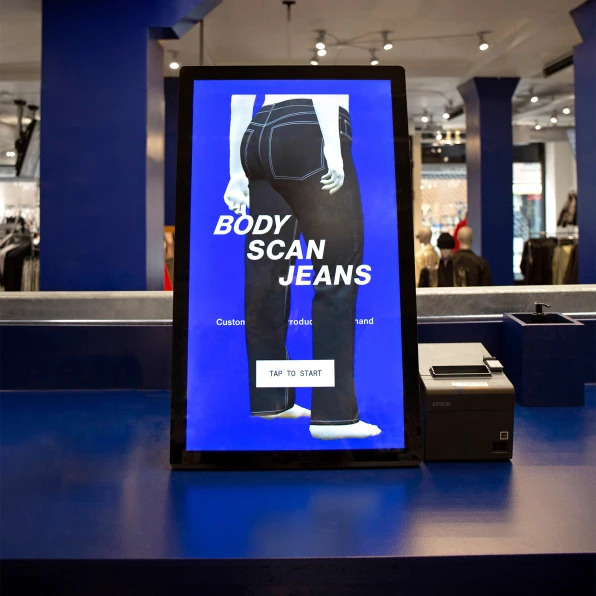
Image Source: H&M
5. Mobile body scanning solutions
Mobile-based body scanning solutions combine the accuracy of hardware body scanners and convenience of online shopping. These solutions use photos captured through the customer’s smartphone device, which AI algorithms then use to determine their precise body measurements.
Allowing customers anywhere, at any time, to find their right size, solutions such as YourFit set the standard for modern day sizing solutions. From just two photos – one from the side and one from the front – 3DLOOK’s innovative technology extracts 86 measurement points with greater accuracy than a human tailor.
Of course, when it comes to photo and video-based solutions, privacy can be an issue — According to KMPG, 86% of consumers have a growing concern about data privacy. Particularly given the sensitivities around body image, shoppers may be wary, so deploying a solution that puts customer security and privacy first is a must. For instance, any data captured by YourFit is intricately protected by two-way encryption and never shared with third-parties, giving users peace of mind that their data is being used solely for sizing purposes.
Providing more than the right size, solutions are unlocking the future of fashion retail
An ecommerce apparel fashion sizing tool’s primary purpose is to offer shoppers a reliable indication of what size will fit them best. However, the most comprehensive solutions can offer far more. YourFit, for instance, complements its size recommendations with a virtual try-on tool that enables retailers not only to recommend the best size, but to also visually show them how it will look on their body.
Capturing valuable customer data, such tools are unlocking the engaging, inclusive and personalized experience that today’s fashion consumers are desperately seeking.
Further reading: Which size recommendation solution is best for your fashion store?
Tags:
Fashion | Technology
EXPLORE MORE CONTENT

Subscribe to our Newsletter
Offer your customers an entirely new, inclusive, and engaging way to interact with your brand
Offer your customers an entirely new, inclusive, and engaging way to interact
with your brand
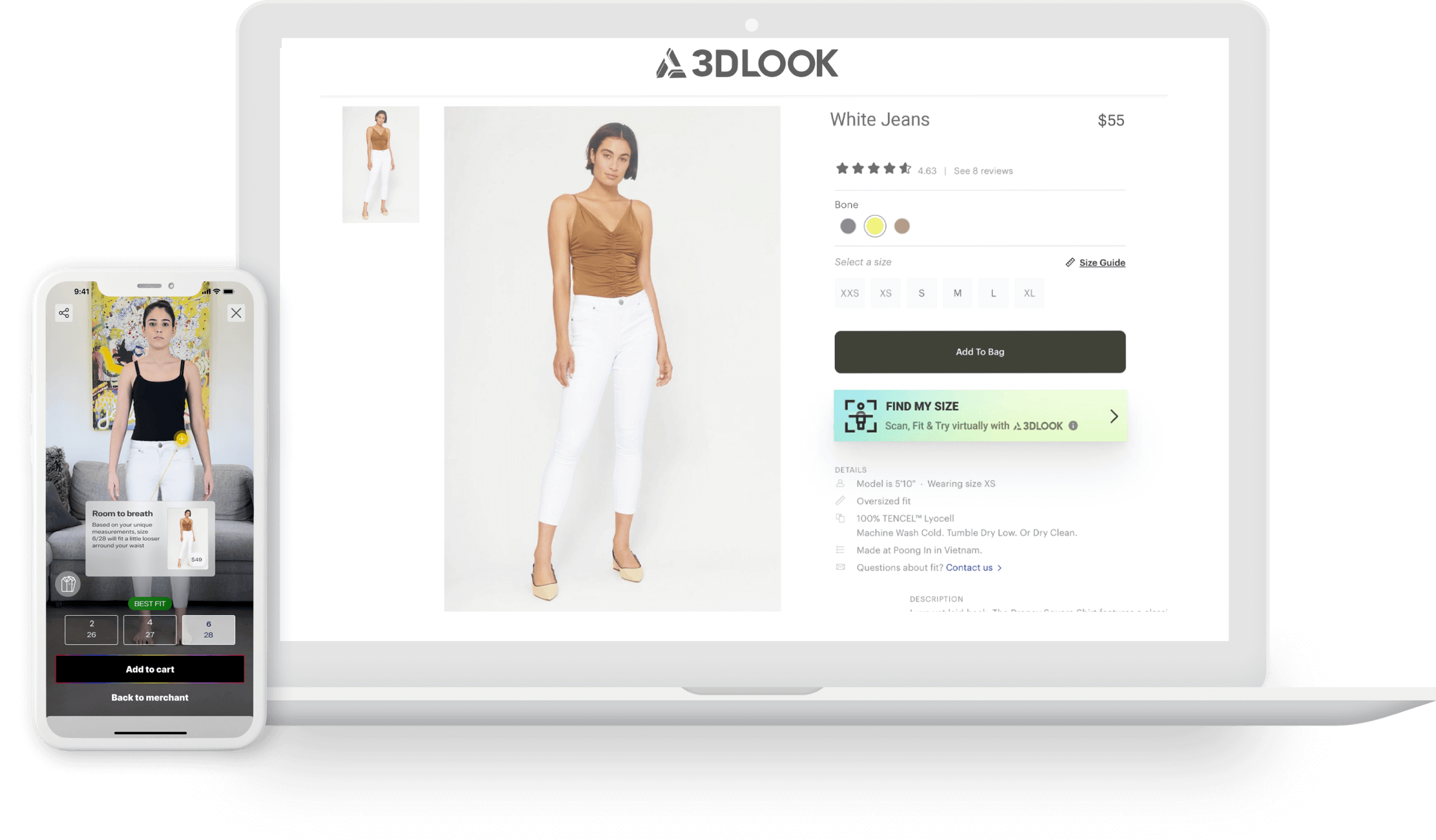
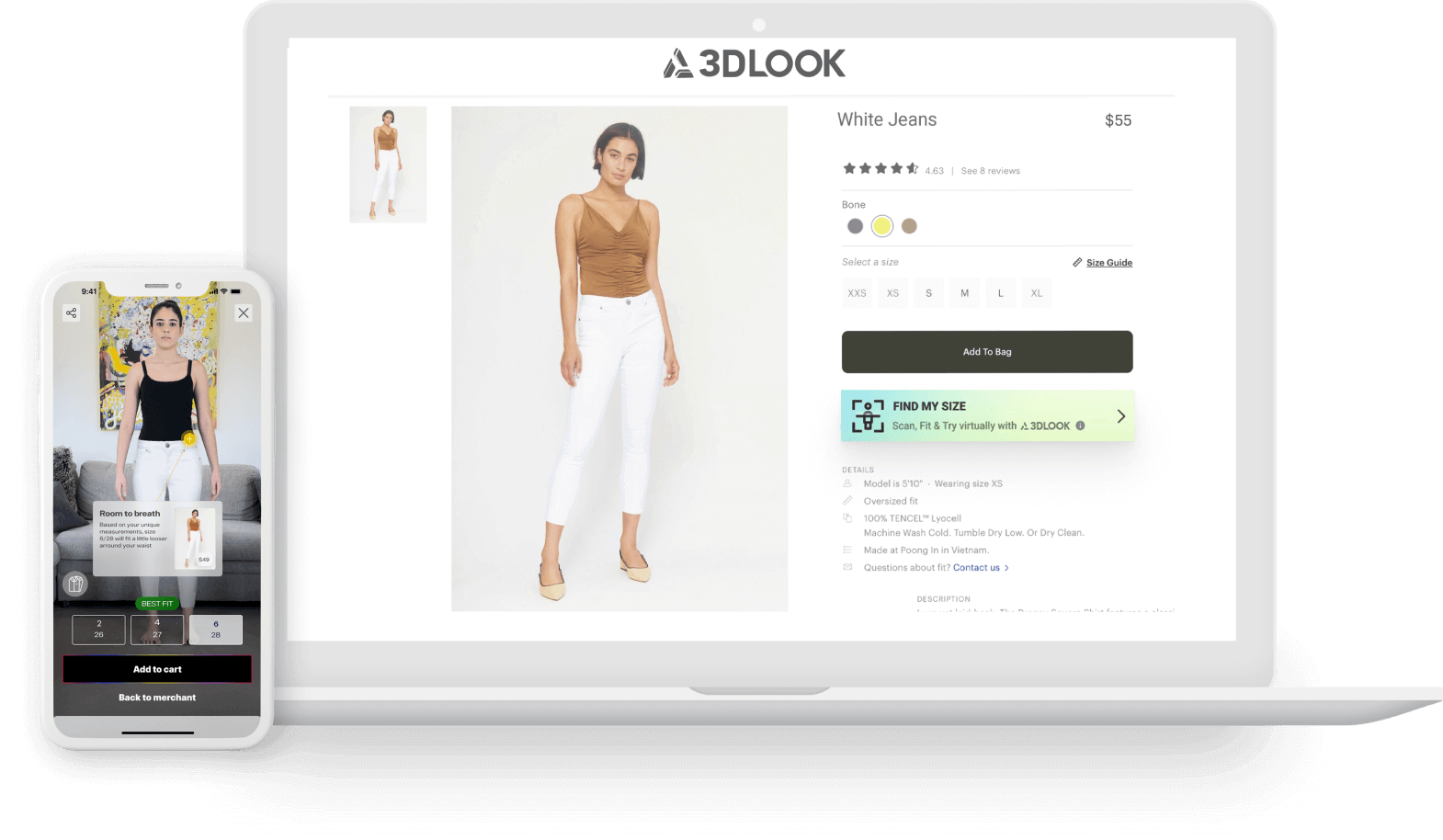
Let us help you find the right solution for your business needs
